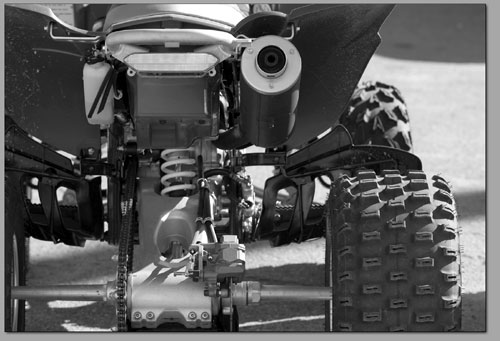| ||
| An off-highway haven Forest Service may improve motorized options SideStory: The future of travel and trails: Forest Service opens travel management to the public
by Will Sands Off-road vehicles could get their own playground on the San Juan National Forest. The local Forest Service is giving thought to enhancing motorized recreation opportunities in the Missionary Ridge area, and the prospect is being applauded on both sides of the recreation table. In July of 2004, the Forest Service announced that it would be taking steps to reduce damage to public lands from off-road vehicles, including all-terrain vehicles and dirt bikes. The announcement came in response to huge growth in motorsports in just a few years and the appearance of more than 60,000 miles of renegade ORV trails on National Forest lands throughout the nation. At the time, Forest Service chief Dale Bosworth proclaimed that ORV abuse was a top threat to national forests and ordered regional and local offices to confine ORV use to designated roads and trails and prohibit cross-country travel. The San Juan National Forest is taking a roundabout approach to Bosworth’s order. Rather than cracking down on illegal ORV use or further policing the vehicles, the Forest Service hopes to enhance the experience in certain areas and create routes specifically for off-highway vehicles. “We’re looking at making a trail system where ORVs can travel,” explained Nancy Berry, recreation forester. “There has been a big increase in motorized use and there have been problems. Now, the goal is to get the use onto designated routes and keep people out of the delicate areas. I think it’ll be good for everyone.” As part of the travel management process, the San Juan National Forest is currently looking at the “Lakes” landscape as that ORV sanctuary. The Lakes encompasses a large portion of Missionary Ridge as well as Lemon and Vallecito reservoirs and the Middle Mountain and East Florida dispersed recreation areas. The San Juan Trail Riders, a local advocacy group for motorized users, was instrumental in spotlighting the Lakes area. “Our club is proactive and wants to encourage OHV use in areas where it makes sense to do that,” explained Gary Wilkinson, a member of the Trail Riders board. “The San Juan Trail Riders believe that the Missionary Ridge area, because of the labyrinth of roads that already exists up there, would provide a good opportunity for the OHV community.” Wilkinson acknowledged that ORV use has exploded in popularity in recent years and that resource damage and conflicts can be linked to the machines. However, Wilkinson added that motorized users are also entitled to use public lands. “When you put more traffic on any trail, you’re going to have issues associated with that,” he said. “What we need is more trails and more opportunities on them. Right now, if you look at the forest, there’s very little opportunity for OHV use compared to other uses. We’re not always going to agree or have the same perspective, but I think we all need to understand that motorized users have legitimate rights and need opportunities.” The approach in the Lakes landscape is being hailed by a variety of users as an intelligent solution to an impasse. Trails 2000 supports the effort to concentrate ORV use on that section of Missionary Ridge, arguing it will eliminate user conflicts elsewhere on the forest. “I think it’s a really good approach,” said Mary Monroe, Trails 2000 executive director. “If you look at user demand, there is a lot of motorized use out there, and there are also a lot of trails suitable to ATVs out there.” Monroe added that some user groups just cannot share the same trails. Creating a haven for ORVs on one end of the forest could be a good step toward getting the machines out of more sensitive areas. “There are some user groups that just aren’t suitable to shared trails,” Monroe said. “We need to identify what the most sustainable trails are for each user group and then that way the Forest Service can police people when they’re in places they shouldn’t be.” The Forest Service is also hoping that new opportunities will make for less policing in the long run. “The hope is that if you’re providing better places for the motorized public to go, maybe people will start patrolling themselves,” Berry said. Wilkinson concluded that multiple use will always be the only way to fairly manage public lands. As soon as each use is honored, the problems will begin to solve themselves. “You have to look at it with a ‘what’s best for everybody’ mindset,” he said. “The fact is that if we can provide more opportunities to each user, we’ll have less resource damage and fewer conflicts in the long run.” •
|


